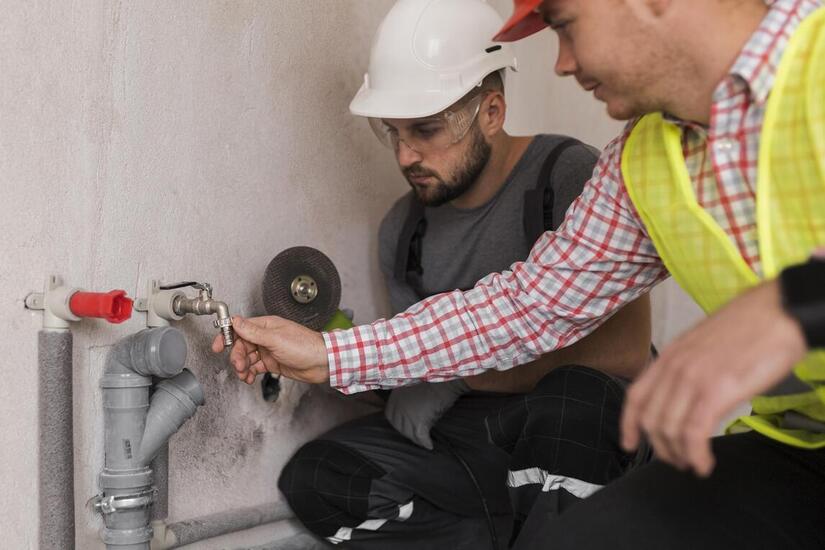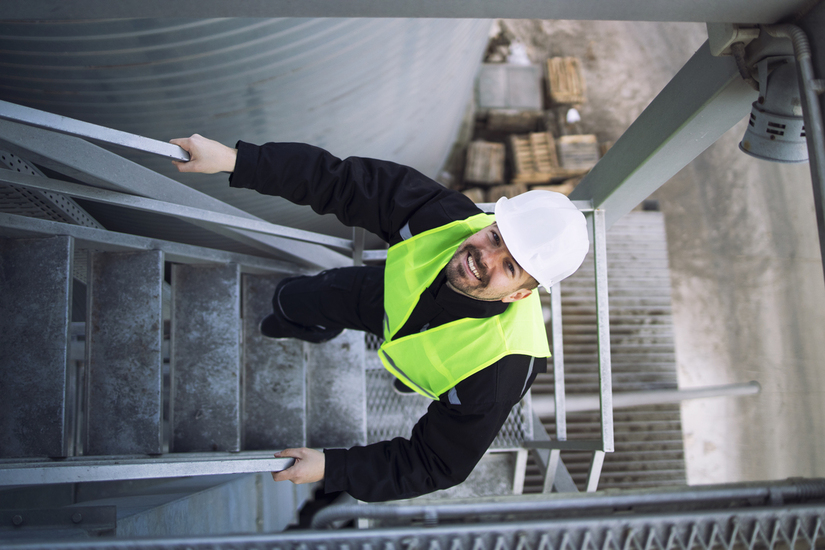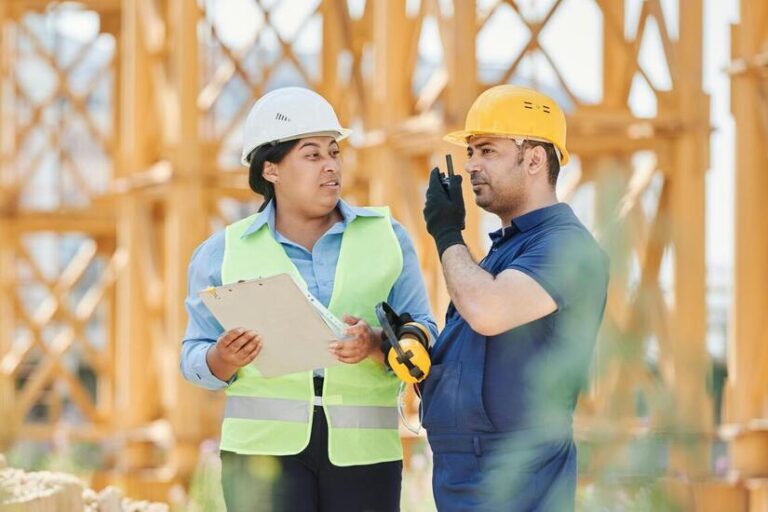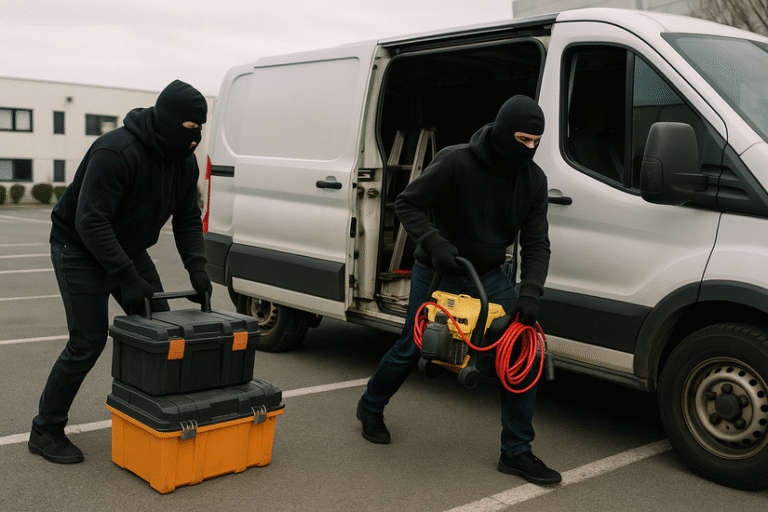Working in confined construction zones carries a unique intensity. These aren’t your standard job sites where crews spread out over wide-open slabs.
Instead, they’re tight crawl spaces, deep utility tunnels, or narrow elevator shafts, places where a single misstep can become a critical safety hazard. It is not a wonder that a rushed decision, or skipping a step, can derail an entire crew’s day.
I’m convinced that respecting the protocols around confined space entry isn’t optional. This article digs into real-world strategies for keeping crews safe when they enter a confined space.
What Qualifies As A Confined Construction Zone?
Confined doesn’t always mean physically cramped; it often refers to spaces with limited entry or exit points, poor ventilation, or hazards that can trap or asphyxiate a worker.
Under the Health and Safety Executive (HSE) guidance in the UK, a confined space is defined as any place (including chambers, tanks, silos, pits, trenches, pipes, sewers, flues, and wells) which is substantially enclosed and where there is a reasonably foreseeable risk of serious injury from hazardous substances or dangerous conditions. These risks can include:
- Hazardous Atmosphere: A lack of oxygen, or the presence of harmful gases, vapours, or fumes.
- Risk of Entrapment or Collapse: Enclosed areas where loose materials or unstable structures could shift and trap workers.
- Engulfment Hazard: Liquids or free-flowing solids like grain or sand that could engulf and suffocate.
- Other Dangers: Fire, explosion, high temperatures, or mechanical hazards such as moving parts that haven’t been isolated.
Examples on a typical site might include:
- Crawl spaces beneath buildings, often low on oxygen and prone to moisture buildup.
- Utility tunnels where sewage or chemical lines run, spaces where toxic gases like hydrogen sulfide or methane can accumulate.
- Manholes and vaults, where a sudden equipment failure can turn a routine inspection into a life-threatening scenario.
Recognizing these spaces early in the project is key. Don’t wait until someone utters, “Hey, this looks tight”, that’s often too late.
Instead, conduct a preliminary survey during planning. The idea is simple: plan first, act safely second.
Core Risks Lurking In Tight Quarters

When you’re stuffing tools and men into a space not designed for continuous occupancy, multiple hazards race to the forefront. Let’s break them down:
- Oxygen Deficiency and Enrichment: A room with too little oxygen can send a worker into dizziness or unconsciousness in seconds. On the flip side, oxygen levels over 23.5% become a fire risk, turning a tiny spark into a roaring blaze.
- Toxic Gases and Vapors: Chemicals used in nearby processes, or naturally occurring gases (e.g., carbon monoxide, hydrogen sulfide), can poison without warning. One breath is all it takes to produce an acute headache, nausea, or worse.
- Heat Stress and Cold Exposure: In deep trenches or vaults, temperatures can skyrocket in summer or plummet in winter, leading to heat exhaustion or hypothermia. Both reduce a worker’s ability to react.
- Structural Collapse and Engulfment: Soil can cave in around trenches, or debris can fall from unsecured overhead areas, turning a clear space into a death trap.
- Visibility and Communication Limitations: Poor lighting amplifies the risk of trips, falls, or mishandling equipment. At the same time, limited entry or exit points challenge the ability to call for help.
Mandatory Pre-Entry Protocols
A lot of people ask, “What’s the bare minimum I need to do before stepping into a confined space?”
The honest answer: You must treat every confined space entry like it’s high-stakes. Cutting corners here isn’t just self-serving, it’s reckless. Here’s what every competent team does as a non-negotiable checklist:
-
Atmospheric Testing:
- Use calibrated gas detectors to measure oxygen levels, flammable gases, and potential toxins.
- Perform continuous monitoring, not just a single “sniff test” at the start. Conditions can change fast, especially when work (e.g., welding or cutting) is ongoing.
-
Lockout/Tagout Procedures:
- Ensure all mechanical or electrical energy sources feeding the space are de-energized and tagged.
- This prevents unexpected startups, imagine a pump starting mid-task, knocking someone off balance in a tight crawl.
-
Permit System:
- Confirm the space is classified as a permit required confined space. If it is, a written permit must be completed and signed by the entry supervisor.
- The permit documents hazards, required protective gear, verification of atmospheric testing, names of authorized entrants, and emergency contacts.
-
Personal Protective Equipment (PPE):
- Respirators rated for the specific hazard (e.g., self-contained breathing apparatus if oxygen is low or toxic gases are present).
- Protective clothing and gloves to guard against chemical splashes or sharp edges.
- Fall protection harnesses and retrieval lines in spaces where vertical access is needed.
-
Assigning an Entry Attendant:
- This role is crucial; the attendant remains outside, constantly monitoring the entrants.
- They maintain communication, watch for signs of trouble, and must never leave their post until all entrants have exited.
Skipping even a single step, from loose tagout procedures to leaving the attendant role to chance, is a shortcut to disaster.
These pre-entry protocols form the structure that keeps workers safe.
Communication: A Lifeline In Confined Spaces

Imagine lying 20 feet underground in a trench, where the only route out is a narrow ladder. A fellow worker outside notices your face turn pale, how will they call you to safety? Without clear, reliable communication, that worker is invisible.
-
Two-Way Radios Or Hardline Intercoms:
- A standard walkie-talkie might suffice for shallow tunnels, but deeper or electrically noisy environments could demand explosion-proof radios.
- In some cases, a hardline phone with a protected cable is the way to go, especially if radio signals cannot penetrate thick walls.
-
Visual or Audible Signals:
- If radios fail, prearranged signals (like tapping on pipes or flashing lights mounted near the entrance) can work.
- Conduct routine checks: “One whistle means ‘all good’; two whistles mean ‘prepare for exit’; three whistles mean ‘emergency!’”
-
Attendant’s Role:
- The attendant’s job is not passive, they must observe the authorized entrants continuously.
- They track time limits, watch for any sign of panic or disorientation, and call for rescue service immediately if they sense trouble.
Ventilation: The Most Overlooked Lifesaver
“Breathing should be simple, right?” Not at all, especially when you’re in a space where air doesn’t circulate naturally. There are some guys in the construction, thinking that a crack above the manhole cover would bring in fresh air. It’s seldom enough.
-
Mechanical Ventilation:
- Portable blowers or ducted air lines force clean air into the space and push contaminants out.
- In dynamic construction zones, continuous air movement is critical. You can’t “vent once and forget it.”
-
Natural Ventilation (When Possible):
- If the space has multiple openings at different elevations, you might get some air exchange.
- However, don’t rely solely on daylight breezes; those can shift unpredictably as doors open and close.
-
Air Monitoring Devices:
- Install fixed sensors or use portable monitors inside. They trigger alarms if oxygen levels dip or if combustible gases creep toward unsafe levels.
- Detection is only half the battle: your team needs to know how to respond instantly, lockdown work, evacuate, or increase airflow.
Psychological Hazards And Worker Fatigue

Confined spaces don’t just threaten your body; they can also squeeze the mind. Anxiety, panic, or claustrophobia can be as dangerous as a low-oxygen environment.
-
Anxiety and Panic Risks:
- Even seasoned workers can experience sudden claustrophobic reactions, tight spaces magnify every sound and shadow.
- Encourage open communication: if someone feels uneasy, they must speak up immediately.
-
Fatigue Management:
- Working bent over in low-clearance tunnels or stooped in trenches is physically draining. Over time, exhaustion reduces attention to detail.
- Rotate workers frequently, no one should spend more than 60–90 minutes in a cramped spot without a break above ground.
-
Spotting Warning Signs:
- Supervisors need to watch for pacing, erratic breathing, or unusual silence from someone in the zone.
- Offer quick “pep talks” and hydration breaks. Sometimes, a 5-minute rest with fresh air outside the confined space is all it takes to reset someone’s focus.
A balanced mind is as crucial as a clear airway. If workers ignore the mental toll, they’re far more likely to overlook a dangling cable or a shifting beam, mistakes that can turn routine tasks into serious safety hazards.
Conclusion
Confined construction zones will always be part of the job: feeding sewer lines, installing HVAC ducts, or checking on subterranean utilities. Following the tips for confined workspace in construction can save you from a severe loss.
These spaces demand respect, vigilance, and a commitment to proven safety or health hazard protocols. From identifying a hazardous atmosphere to verifying oxygen levels and ensuring rescue service readiness, no step in the process is too small.
By embracing rigorous permits, continuous monitoring, clear communication, and a culture that prioritizes both physical and mental well-being, we safeguard our teams.





